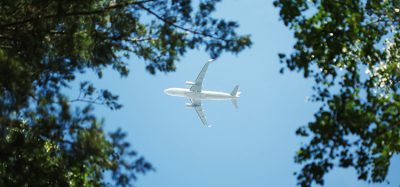Greater Orlando Aviation Authority’s Advanced Air Mobility legislation to pass before authorities
- Like
- Digg
- Del
- Tumblr
- VKontakte
- Buffer
- Love This
- Odnoklassniki
- Meneame
- Blogger
- Amazon
- Yahoo Mail
- Gmail
- AOL
- Newsvine
- HackerNews
- Evernote
- MySpace
- Mail.ru
- Viadeo
- Line
- Comments
- Yummly
- SMS
- Viber
- Telegram
- Subscribe
- Skype
- Facebook Messenger
- Kakao
- LiveJournal
- Yammer
- Edgar
- Fintel
- Mix
- Instapaper
- Copy Link
Posted: 26 January 2024 | International Airport Review | No comments yet
A proposal that would designate the Greater Orlando Aviation Authority as the test site for Advanced Air Mobility is to go before the state House Transportation & Modals Subcommittee.


GOAA has collaborated with local, state and federal partners on how to integrate the technology that will be needed at airports to make AAM successful.
A proposal that would designate the Greater Orlando Aviation Authority (GOAA) as the test site for Advanced Air Mobility (HB 981) in the state of Florida is scheduled to go before the state House Transportation & Modals Subcommittee, chaired by State Representative Fiona McFarland, District 73.
The proposal was filed on December 21, 2023, by State Representative Doug Bankson, District 39.
“We appreciate Chair McFarland and State Representative Bankson’s efforts to create thoughtful legislation that will advance Florida as a leader in the development of Advanced Air Mobility,” said GOAA CEO Kevin J. Thibault. “This proposal can help bring about the partnerships and innovation that will be needed to benefit every airport in Florida.”
During the past several years, Greater Orlando Aviation Authority has collaborated with local, state and federal partners, including the Federal Aviation Administration, as well as numerous industry manufacturers and operators, on how to integrate the technology that will be needed at airports to make AAM successful. Greater Orlando Aviation Authority, in partnership with state, local and the private industry, has been an industry leader in multimodal connectivity and is the only U.S. airport to have higher-speed passenger rail service onsite and adjacent to an airport terminal.
To date, GOAA has spent close to $20M to plan for and accommodate onsite amongst its 12,000-acre campus for AAM integration on-airport and to support other emerging aerospace technologies. Those activities include the following:
• Aviation-centric economic development study
• Land management and site preparation
• Environmental assessment site completion
• Airspace review, concept site plans and 3-D renderings
• Advanced planning and AAM industry stakeholder outreach
• Utility planning
• Airport layout plan update coordination
As defined in the proposed legislation, Advanced Air Mobility is an air transportation system that primarily uses powered-lift aircraft to carry passengers or cargo in an urban or regional setting. Developing a network of Electric Vertical Takeoff and Landing (eVTOL) aircraft and vertiport facilities will provide residents and visitors access to a rapid and flexible mode of local transportation. AAM could also serve as a platform for medical transportation, emergency services, law enforcement and disaster relief.
According to industry experts, the integration of AAM into today’s National Airspace System has the potential to reduce carbon emissions, reduce noise impacts, create new jobs, provide air service to underserved communities and create opportunities for new and diversified revenue streams for airports.
Related topics
Advanced air mobility (AAM), Regulation and Legislation, Sustainable development, Testing

















